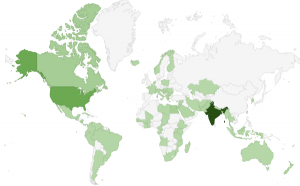The Research Committee does just what the name implies – research surrounding computer science education in K-12 setting. The research is often in conjunction with other organizations, such as Oracle that led to the recent CSTA – Oracle Academy 2014 High School CS Survey. Beside partnering with corporations, CSTA also conducts larger research projects, such as the Bugs in the System: Computer Science Teacher Certification in the US. These types of research are important to understanding what is happening in the landscape of computer science education and identify issues our CS educators face .
Along with larger research projects we also do our own CSTA Membership Survey (results of past years here) and CSTA National Secondary Computer Science Survey (results of past years here). These two surveys alternate years to allow CSTA to collect complimentary data and inform our work.
- The membership survey gives us data on membership demographics, how they are connected to CS education, and CSTA resources they find useful in their work. This gives us data to improve CSTA’s support and direction for the membership at large.
- The CSTA National Secondary CS Survey gives us data on what is being taught at the high school level, the types of certification teachers hold, demographics of the students we reach, as well as allowing us to see the demographic reach of CS education. The survey data allows us to tailor our professional development resources to meet the curricular needs of the CSTA members and apply for grants and funding based on the student population we are reaching.
This years 2015 CSTA National Secondary Computer Science Survey was sent out in an e-blast yesterday (4/21) to the US Secondary membership. We would greatly appreciate your time in completing the survey as the data is valuable in meeting your needs. As an incentive, we have a drawing for five Amazon gift cards worth $100 for those that complete the survey.
Survey link: https://www.surveymonkey.com/s/2015NatHSCS (Closes on May 5, 2015, at 11:59pm HST)
Thanks,
The Research Committee
Stephanie Hoepppner & Aman Yadav, CSTA Board and Research Committee Members


